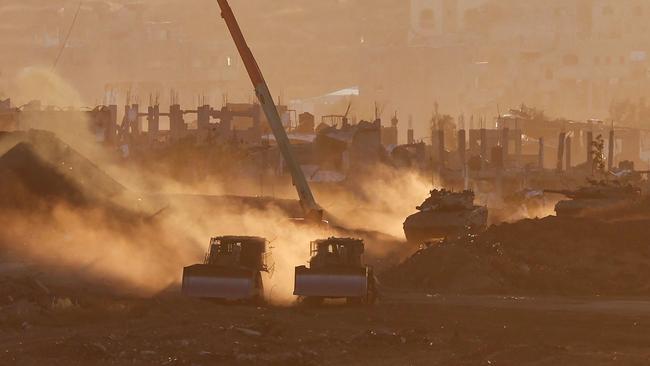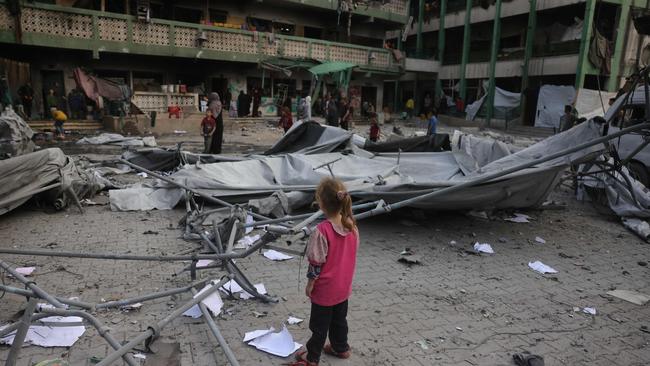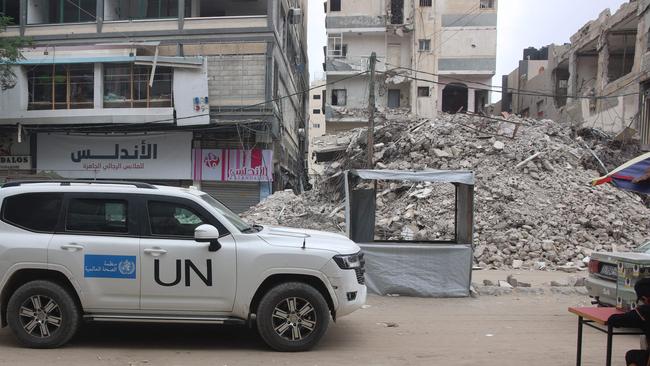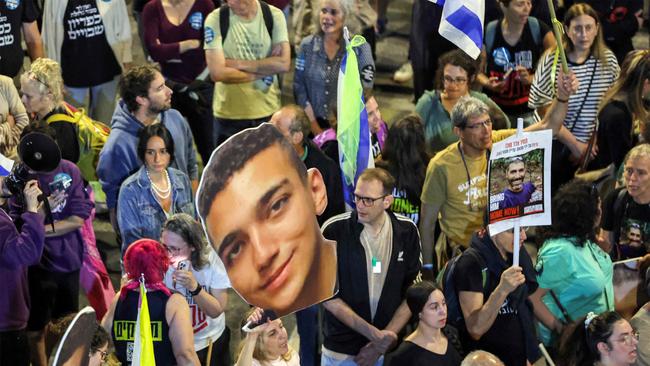Israel on the cusp of finishing the war that Hamas started

Israel’s security cabinet last week approved a plan for a transition from the punitive operations and raids that have characterised Israel’s efforts in Gaza to date, to the taking and holding of territory.
The new plan is a tacit acknowledgment that Israel’s approach across the past 18 months has not come close to the desired objective of the destruction of Hamas rule in Gaza.
The intention of the renewed operation, if started, will be to secure destruction of the Islamist authority that a complacent Israel allowed to emerge in Gaza in 2007-23 and that launched the massacres of October 7, 2023.
In preparation of the new operation’s launch, tens of thousands of Israel Defence Forces reservists from the infantry and armoured corps are receiving renewed calls to active service.
Officials quoted in Israeli media have suggested the offensive will not begin before Friday, when US President Donald Trump’s visit to the Middle East is set to conclude.
Trump is scheduled to visit Saudi Arabia, Qatar and the United Arab Emirates between Tuesday and Friday.

A key part of the new plan will be to relocate the Gazan population to an area below the corridor that Israeli forces have established between the Gazan cities of Rafah and Khan Younis. Israel envisages the establishment of an area between the Morag Corridor and Gaza’s border with Egypt, where the population will receive humanitarian aid.
The area will be secured by Israeli forces. This is intended to allow the IDF operational freedom of action in the remainder of Gaza.
Israel’s war effort in Gaza has been stymied by confused goals since its start.

The October 7 massacres triggered a much broader conflict in the region, in which at its height Israel faced attacks and action on seven fronts – Gaza, the West Bank, Lebanon, Syria, Iraq, Yemen and Iran.
Israel scored considerable military achievements against Iran and its proxy militias in Lebanon, Iraq and Yemen. It succeeded also in preventing the outbreak of a major insurgency in the West Bank.
As a result, Iran’s proxies in Lebanon and Iraq have withdrawn from the fight.
Iran has been silent since Israeli retaliatory action on October 26, 2024. Syria’s Assad regime, a longstanding enemy of Israel, was toppled as an unexpected by-product of Israel’s successes against Lebanese Hezbollah.
The Houthis, as seen in the past week, are determined to continue the fight though their capacity to inflict harm on Israel is outweighed by Israel’s ability to respond.
Despite these successes, victory in the original arena that launched the war – Gaza – remains elusive. Israel has now taken control of about 30 per cent of the strip.
Outside these areas, the Hamas-led authority continues to rule. As has been apparent in recent weeks, it remains capable of acts of savage repression against Gaza residents who seek to protest against its rule.

The Hamas-run Gaza interior ministry announced its forces killed six civilians last week for “looting”. Hamas also retains significant military capacity, as evidenced by the deaths of IDF soldiers in action in Gaza in the past 10 days.
The simple if unpalatable truth is that Israel has failed to replicate its success in Gaza because of the Israeli hostages held by Hamas. The stated goals of Israel’s campaign in Gaza are the return of the hostages, the disarming of Hamas and the destruction of its rule in Gaza. The official version has it that hostages will be released on better terms as a result of military pressure on Hamas.
The problem with this approach is it isn’t really possible to try to destroy a political authority and seek to negotiate with it at the same time. In the end, reality requires you will have to prioritise one goal or the other. During the past 18 months Israel has prioritised the issue of hostage releases while maintaining a level of military pressure. This approach has brought about the release of most of the hostages (while also freeing a large number of Palestinian terrorists from Israeli jails).
But it has failed to secure the demise of Hamas, which predictably has declined Israel’s invitation to dissolve itself by continuing to insist any agreement to end the fighting and secure the release of remaining hostages include an Israeli commitment to withdrawal and a long-term ceasefire. This would enable Hamas to proclaim victory. Israel rejects any such possibility.
So, does the announcement of Operation Gideon’s Chariots indicate Israel has now acknowledged this bitter reality and will prioritise the destruction of Hamas and move in the days ahead to finally achieve this? It is not yet clear.

Certain voices emanating from the security establishment have suggested the planned operation is intended as a tool of pressure to assist hostage negotiations. Israeli officials also claimed on Sunday the release of hostage Edan Alexander was the result of “military pressure”, according to reports in Israeli media.
The release of the dual US-Israeli citizen can more plausibly be accounted to a Qatar-influenced decision by Hamas to make a gesture to Trump during his visit to the region. But these quotes suggest a clear Israeli decision to prioritise the destruction of Hamas may not, in fact, have been reached. Absent this, Israel is unlikely to escape the inconclusive holding pattern of recent months.
The contest initiated by Hamas on October 7, 2023, places not only armies but societies in conflict with each other.
Hamas intends to prove that by striking at Israel’s underbelly – its concern for every one of its citizens – Israel’s enemies can paralyse the Jewish state and prevent a decisive response to aggression.
Should the Palestinian Islamist movement that has held sway in Gaza since 2007 emerge from the past 18 months of war intact, if battered, it will have proved this point. This will be understood by all of Israel’s enemies.
Jonathan Spyer is a Jerusalem-based Middle East analyst.





